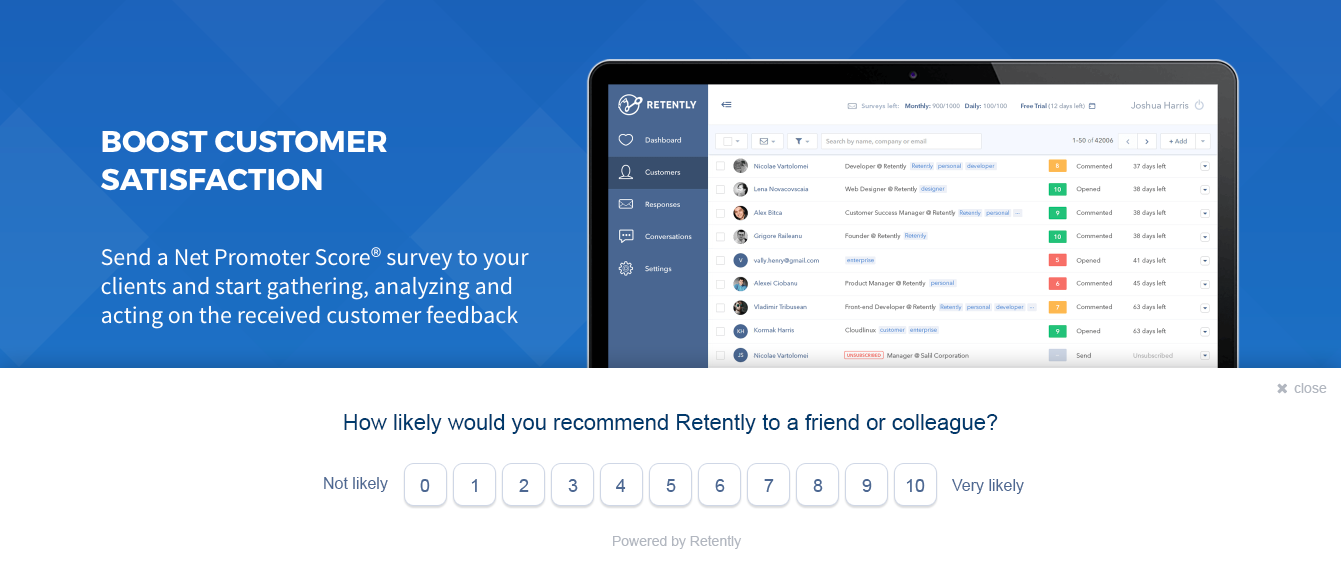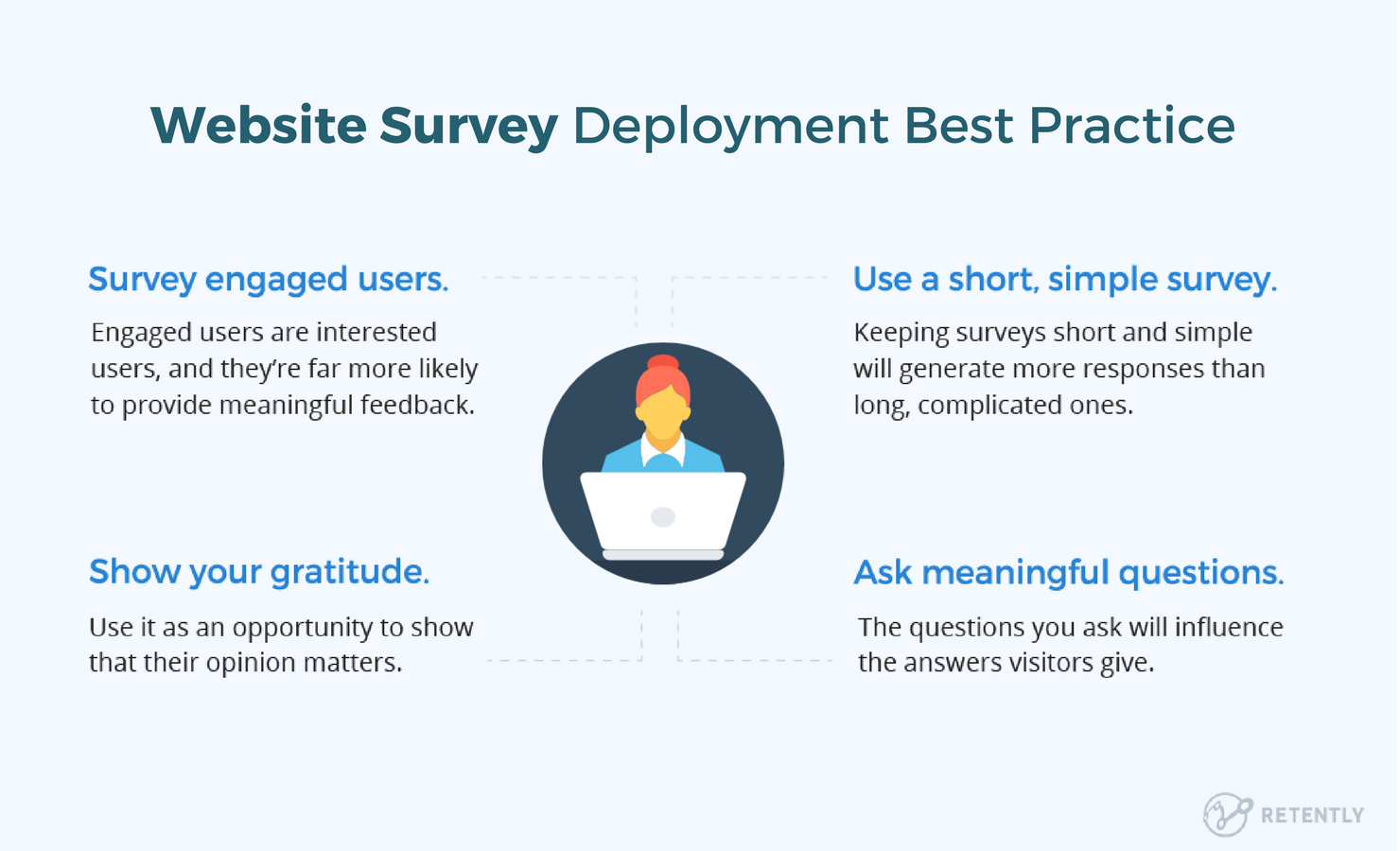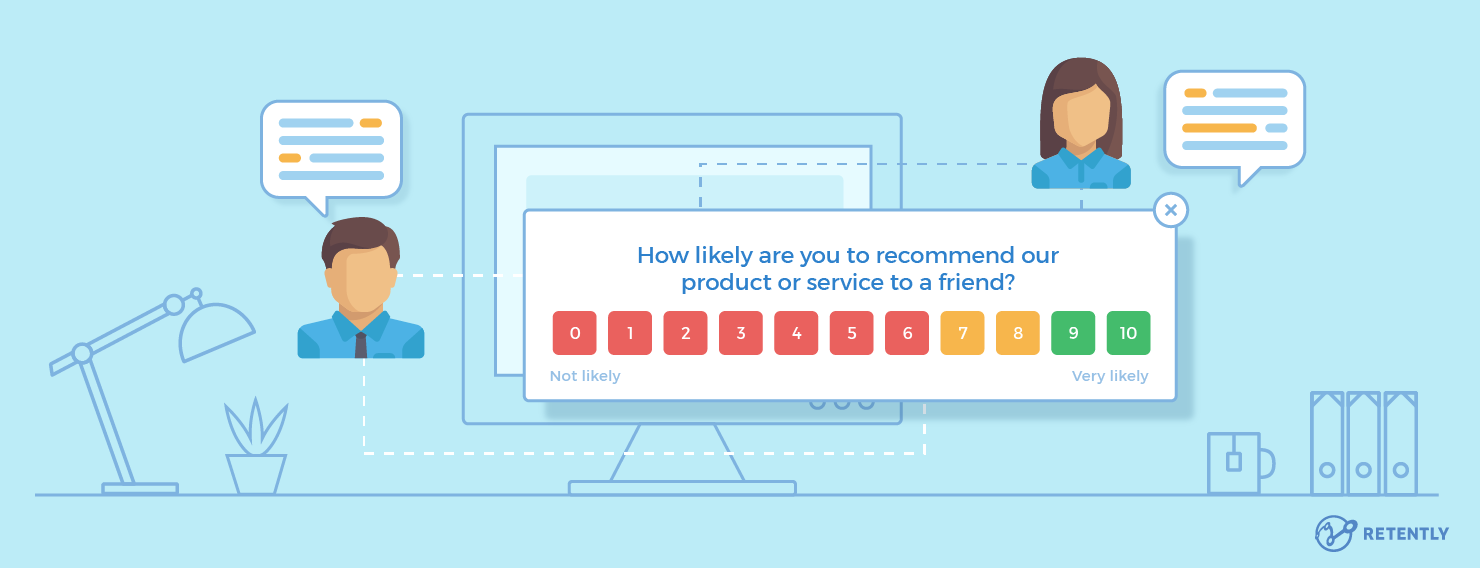Have you ever read an online newspaper, blog or magazine only to be asked for your feedback as a reader?
Most of us associate customer feedback with, well, customers. However, for many businesses in the publishing industry, whose readers are their customers, asking for feedback directly is a way to optimize their product and learn more about user experience.
If you’ve visited a newspaper website in the last year, chances are that you’ve run into at least one pop-up asking you to complete a reader survey. Did you answer it, or did you close it and get back to reading? If you completed it, did you have any valuable feedback to share?

From Ecommerce companies and SaaS services to physical product businesses, customer feedback is extremely valuable. But does the newspaper method of setting up surveys on their website and surveying people before they become customers work? If it does, why? If it doesn’t, why not? Is it an efficient way to gain meaningful feedback?
If you’re managing a website and wondering how to gauge if your visitors are digging their experience, then Net Promoter Score® might have popped up on your radar. In simple terms, NPS is a metric used to figure out how likely people are to recommend your site to their friends. It’s like asking someone, “On a scale from 0 to 10, how likely are you to tell your friends about us?”.
Let’s start by looking at the pros and cons of surveying your website visitors for Net Promoter Score and direct feedback.
You’ll discover strengths, weaknesses and acquisition opportunities
Customer retention is one aspect of driving revenue for your business. The other, which takes place long before retention, is customer acquisition.
While post-sale Net Promoter Score surveys help you gain insight into what you can do to improve your onboarding process, boost your retention rate and reduce churn, pre-sale surveys help you discover weaknesses that stop people from becoming your customers in the first place.
By plugging these leaks, you can drive more website visitors to sign up as trial users, bringing in a greater flow of leads that eventually convert into paying customers.
This means your retention efforts, including Net Promoter Score surveying, have much more of an impact.
There are several benefits of adding a website visitor survey to your website, including:
- You’ll discover which aspects of your website’s content and usability are stopping visitors from becoming paying customers. A short, user-friendly survey gives you an extra layer of useful information that regular analytics do not always provide.
- You can reach a large number of leads and opportunities in an extremely short period of time.
- If you offer multiple products, you’ll discover which products customers are and aren’t interested in and why. This information can be extremely valuable for an Ecommerce business.
- You’ll get real feedback from your target customers at purchase. NPS data collected post-sale is very valuable, but there’s nothing quite like hearing why a visitor bought something (or didn’t buy it) when they made the decision.
- Because you’re surveying a much larger audience (visitors vs. paying customers), you’ll gain a more diverse, varied and statistically significant sample of responses.
- Finally, visitor surveys can be used as an effective lead-generation tool. When a customer leaves their name and email address along with useful input, your team can follow up to implement their feedback and potentially regain and close the sale.
This data can give you valuable insights into why visitors are and aren’t buying your product or service – insights that can help you improve your conversion rate and gain more customers further on.
Thus, we can group NPS benefits for website visitors into 3 categories:
1. Measuring customer loyalty
One of the standout features of NPS is its ability to measure customer loyalty, a critical factor for any website looking to grow its audience or customer base. NPS isn’t just about who likes your site right now – it tells you who’s likely to stick around and advocate for you.
A high score means you have a strong group of Promoters who are not just returning visitors but also potential ambassadors, spreading the good word about your site. Tracking these trends over time can help you gauge the impact of changes to your site or services on your most valuable users.
2. Feedback loop
NPS isn’t a one-way street. Beyond just offering a score, it opens up a feedback loop that provides actionable insights. By asking follow-up questions based on the initial NPS response, you can dive deeper into why visitors gave the scores they did.
For example, you can ask Detractors what turned them off, giving you a direct line to potentially overlooked issues. Similarly, understanding what keeps your Promoters coming back can guide you in replicating those successful elements across your site.
3. Improving user experience
The simplicity of NPS makes it a valuable tool for pinpointing general sentiment about your site, but its real power comes from using it to refine and enhance user experience. Analyzing NPS data helps you identify what’s working and what isn’t. For instance:
- High scores from a recent update can validate your design choices.
- Low scores might highlight problems with website navigation, content relevance, or even page load times.
Using NPS data effectively means you can prioritize website improvements based on actual user feedback, rather than just guesswork. This strategic approach makes your website more enjoyable for current users and also more attractive to potential visitors.
When should you survey your website’s visitors?
Depending on the type of business you run and the structure of your website, you might have several opportunities to survey your visitors. Here are a few tips on where and when to ask for feedback:
1. After meaningful interactions
Consider triggering an NPS survey after a user has reached a significant milestone on your site. These moments capture genuine sentiments based on fresh experiences. Take these scenarios as example:
- When they first reach your website and read an article or blog post. Surveying visitors at this point lets you discover what they were looking for when they found your website and can provide insights into the quality of your on-page content.
- After they sign up for your free trial. At this point, users aren’t yet paying customers, but they can still provide useful feedback to help you optimize your visitor-to-user conversion rate and generate more leads.
2. On exit intent
For websites aiming to understand why users might not be engaging as expected, an NPS survey can pop up when a user shows signs of leaving the site without signing up or when they abandon their shopping cart.
Actually, about 70% of online customers abandon their shopping carts. Surveying users after an abandoned cart is a great way to discover the obstacles that prevented them from checking out. Using this data, you can reach out to customers with unfinished purchases via email to win back their business.
3. Regular check-ins
For long-term projects or ongoing services, periodically check in with users to see how their perception might have changed, especially after updates or major changes to the site.
Finally, by tracking visitors’ cookies, you can survey people on the second or third time they visit your website. This can help you discover why returning visitors are or aren’t converting into paying customers or free trial users.
Website Survey Deployment Best Practice
- Survey engaged users: Engaged users are interested users, and they’re far more likely to provide meaningful feedback. Instead of surveying users the moment they reach your website, wait a little to give them a chance to engage with your content and offerings first.
- Use a short, simple survey: That’s not why respondents visited the site. Remember the KISS principle: keeping surveys short and simple will generate more responses than long, complicated ones. A short NPS with a 0-10 scale will always outperform a long customer feedback questionnaire with 20+ detailed, confusing questions.
- Ask meaningful questions: The questions you ask will influence the answers visitors provide. Ask meaningful questions, such as “What stopped you from checking out?” or “What’s the #1 thing we can do to improve our product/service for you?”.
- Show gratitude: Use it as an opportunity to show your visitors that their opinions matter. Thank them for their feedback after they complete the survey. Then follow up with those who were unhappy with your product and convert them into paying customers.

Visitors have valuable feedback, but they aren’t paying customers
Listening to the public is a great thing, but it’s paying customers who ultimately have the most valuable feedback on how you can improve your product.
Listen to the opinions of your website’s visitors and you’ll discover opportunities that might increase your conversions and sales. Pay attention to your existing customers, and you’ll reach an audience that’s already paying for and using your product.
When you survey your customers, you reach people who have committed to your business through a monthly or one-off payment. They’re invested in the product, and as such, the feedback they offer is usually more honest and direct.
With visitor surveys, however, results aren’t always perfect. Visitors who don’t like your product can vent their frustration in survey answers, giving you a biased sample that makes things look worse, from a visitor satisfaction perspective, than they really are.
So, there’s a little downside in surveying and listening to your website’s visitors. However, placing a visitor survey on your website remains one of the most effective ways to reach all your users and ensure that every segment of your visitors receive the same chance to respond to the survey.
Thus, we advise looking at what both – your website visitors and customers – are saying in regards to your product or service. To add more clarity to your survey process, divide your paying customers and visitors into two different customer satisfaction campaigns or use segmentation analysis after the campaign.
It’s important to understand where visitor feedback fits in your list of priorities, and not to value it more than an opinion or insight from a paying, long-term customer.
Interpreting your NPS website data
Understanding the context behind your NPS score helps turn raw data into actionable insights:
- Consider Segmentation: Break down NPS responses by user demographics, user type, or behavior on your site. This can help identify specific groups who are particularly satisfied or dissatisfied.
- Use Text Analysis for Open-Ended Responses: NPS includes an option for respondents to explain their score. This qualitative NPS data is crucial for understanding the reasons behind the scores and can guide specific improvements. Use text analysis tools to categorize comments and identify common themes. For instance, if many Detractors complain about website speed, it’s a clear sign that you need to address this issue.
- Look for Patterns Over Time: Instead of taking one-off NPS scores at face value, look at how scores trend over time. Leverage specialized survey software with embedded analytics features to track your NPS responses and trends in real time. This can help you quickly identify issues and successes – for example, the impact of specific changes made on the site – making it easier to adjust strategies and goals accordingly.
Integrating NPS with other metrics
To get a holistic view of your website’s performance and user satisfaction, integrate NPS with other metrics:
- User Engagement Metrics: Combine NPS data with analytics like page views, session time, and bounce rates. High NPS with high bounce rates might indicate that while users recommend the site, they may also be encountering issues that need investigation.
- CSAT and CES: These customer satisfaction metrics provide additional layers of understanding about user satisfaction and the effort required to use your site effectively.
- Conversion Rates: Relate NPS to conversion rates to see if more Promoters lead to higher conversions, which would underline the importance of improving customer experience based on NPS feedback.
Implementing these best practices for NPS on your website will enhance the relevance and accuracy of the feedback while ensuring that the data collected is comprehensive and actionable. This way, website owners will be able to make informed decisions that can significantly improve user satisfaction and site performance.
Survey your customers and calculate your Net Promoter Score
Throughout this article, we’ve unpacked the ins and outs of Net Promoter Score as a tool for measuring the loyalty and satisfaction of website visitors. NPS offers a straightforward approach, asking visitors how likely they are to recommend your website, which can provide a snapshot of your audience’s overall sentiment and loyalty. Its simplicity is one of its greatest strengths, making it easy to implement and understand.
Ready to dive deeper and really get to grips with what your website visitors think and feel? It’s time to consider implementing NPS, alongside other insightful metrics, to start harnessing the power of user feedback.
Retently offers businesses of all sizes the unique opportunity to automatically measure their Net Promoter Score, along with other customer satisfaction metrics and, therefore, reduce churn rates, increase revenue and create happier, more enthusiastic customers.
Sign up for a free trial now to start using Retently to survey your website visitors and improve your conversion rate.






























 Alex Bitca
Alex Bitca 

 Greg Raileanu
Greg Raileanu 


 Christina Sol
Christina Sol 